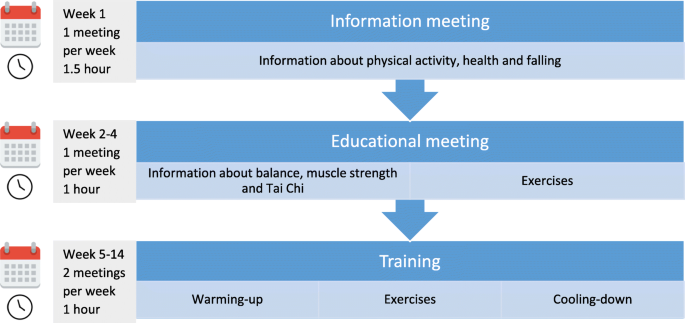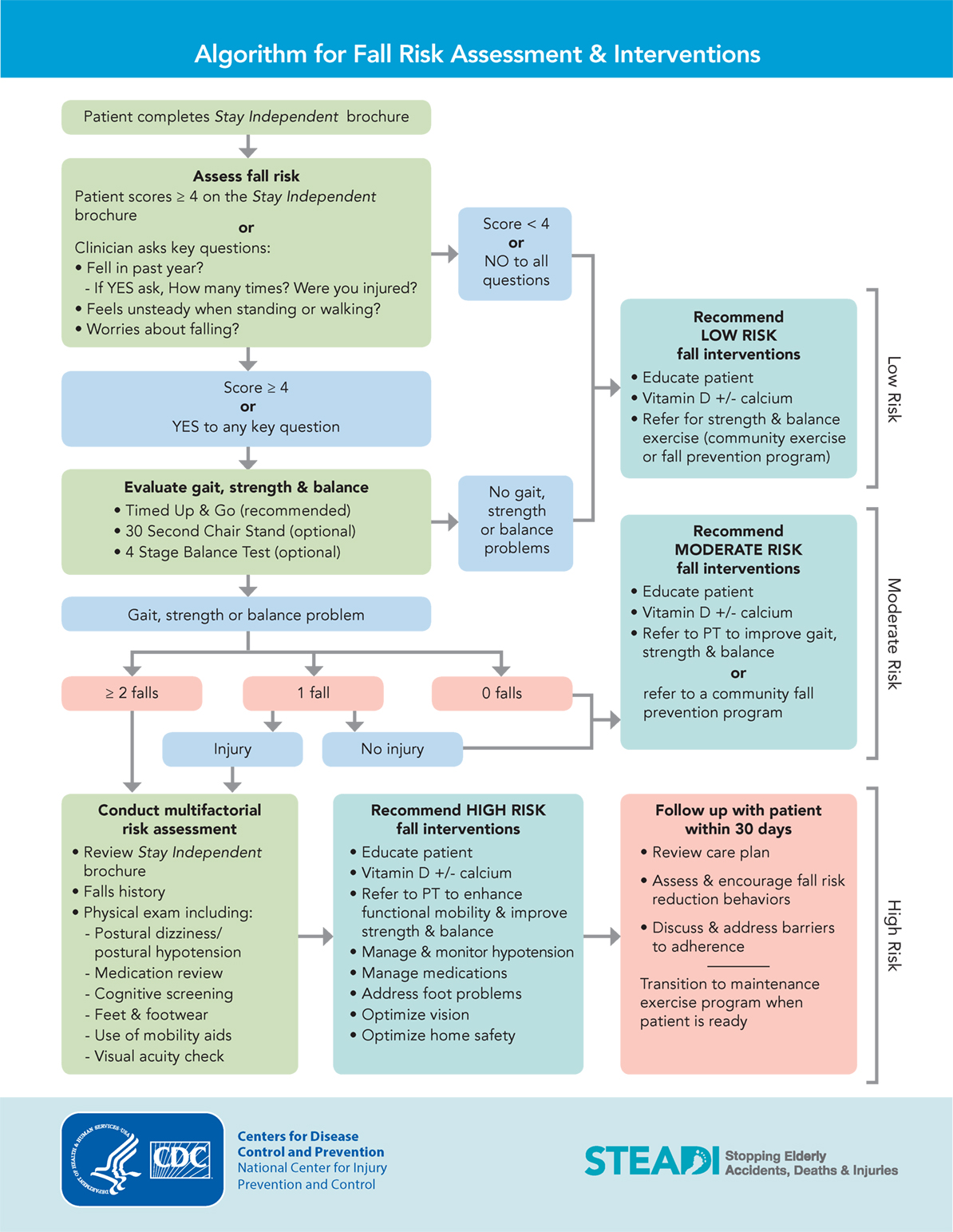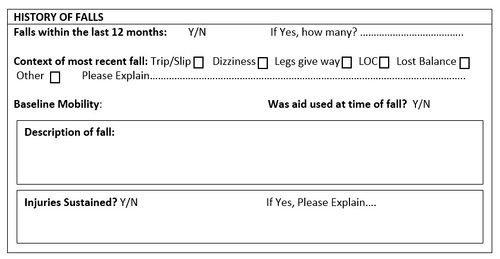The Best Strategy To Use For Dementia Fall Risk
The Best Strategy To Use For Dementia Fall Risk
Blog Article
Dementia Fall Risk for Beginners
Table of ContentsExamine This Report on Dementia Fall RiskLittle Known Questions About Dementia Fall Risk.The Buzz on Dementia Fall RiskAll About Dementia Fall RiskNot known Details About Dementia Fall Risk
The FRAT has 3 areas: drop risk condition, risk variable checklist, and activity strategy. A Fall Threat Status includes data regarding history of current drops, medications, psychological and cognitive status of the client - Dementia Fall Risk.If the patient ratings on a danger element, the corresponding number of points are counted to the patient's fall threat score in the box to the much. If a person's autumn danger rating totals five or greater, the person goes to high threat for falls. If the person scores only 4 points or lower, they are still at some risk of falling, and the registered nurse should utilize their best scientific evaluation to take care of all loss risk elements as part of a holistic care plan.
These standard methods, in basic, aid create a risk-free environment that minimizes unintended drops and delineates core precautionary procedures for all clients. Signs are vital for clients at danger for drops.
Dementia Fall Risk Fundamentals Explained
For instance, wristbands ought to include the person's last and given name, day of birth, and NHS number in the UK. Information should be printed/written in black versus a white history. Only red color needs to be used to indicate special client condition. These referrals are regular with present advancements in individual recognition (Sevdalis et al., 2009).
Things that are too much may require the client to get to out or ambulate needlessly and can possibly be a risk or contribute to falls. Aids stop the individual from going out of bed with no assistance. Registered nurses respond to fallers' call lights faster than they do to lights started by non-fallers.
Visual problems can considerably cause drops. Maintaining the beds closer to the flooring reduces the danger of falls and severe injury. Putting the cushion on the floor considerably decreases loss danger in some healthcare settings.
The 30-Second Trick For Dementia Fall Risk
Individuals that are tall and with weak leg muscle mass who attempt to rest on the bed from a standing setting are likely to drop onto the bed due to the fact that it's as well low for them to lower themselves securely. If a tall client efforts to obtain up from a low bed without assistance, the client is most likely to fall back down onto the bed or miss the bed and drop onto the floor.
They're made to promote timely rescue, not to stop falls from bed. read what he said Aside from bed alarm systems, raised supervision for high-risk clients additionally might help avoid drops.

Clients with an evasion stride rise fall opportunities substantially. To reduce loss danger, footwear ought to be with a little to their explanation no heel, thin soles with slip-resistant step, and support the ankle joints. Advise individual to make use of nonskid socks to avoid the feet from moving upon standing. Urge patients to use suitable, well-fitting shoesnot nonskid socks for motion.
Examine This Report about Dementia Fall Risk
Clients, especially older adults, have actually lowered visual capability. Illumination a strange atmosphere assists enhance presence if the person have to get up in the evening. In a research study, homes with appropriate lights record fewer drops (Ramulu et al., 2021). Enhancement in lights in your home might reduce fall prices in older grownups (Dementia Fall Risk). Using gait belts by all healthcare suppliers can advertise safety and security when aiding clients with transfers from bed to chair.

Caretakers are effective for assuring a protected, safeguarded, and safe atmosphere. However, researches demonstrated extremely low-certainty proof that sitters lower fall danger in acute treatment hospitals and just moderate-certainty that options like video monitoring can lower caretaker usage without raising loss danger, recommending that caretakers are not as valuable as initially thought (Greely et al., 2020).
Dementia Fall Risk - The Facts

Enhanced physical conditioning minimizes the threat for falls and limits injury that is endured when loss takes place. Land and water-based workout programs may be in a similar way advantageous on balance and stride and thereby decrease the threat for drops. Water exercise may contribute a favorable benefit on equilibrium and stride for females 65 years and older.
Chair Surge Workout is a basic sit-to-stand workout that helps enhance the muscles in the upper legs and buttocks and improves wheelchair and self-reliance. The objective is to do Chair Surge workouts without using hands as the customer comes to be more powerful. See sources area for a comprehensive guideline on exactly how to perform Chair Increase exercise.
Report this page